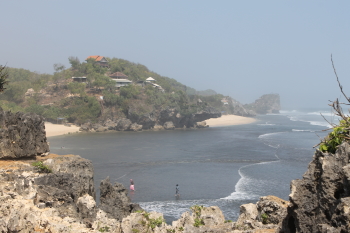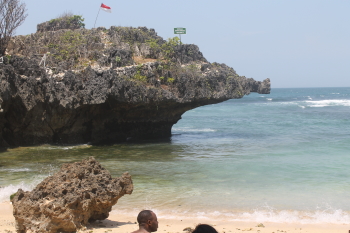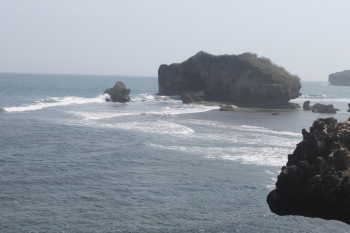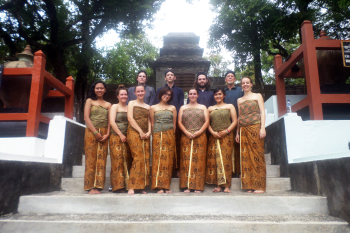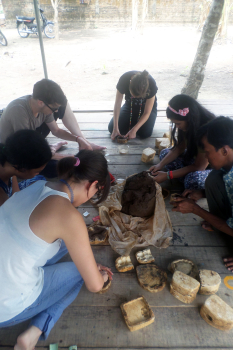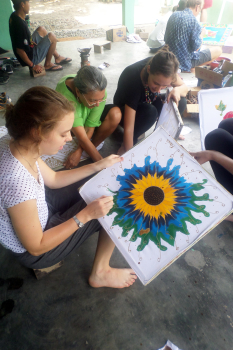Yogyakarta is not only a student city; it is also the Indonesian capital of culture that is surrounded by beautiful natural landscapes. Therefore every semester, ACICIS Yogyakarta organise fieldtrips to ensure our students make the most of their time in Indonesia. In Semester 41 (August-December 2015), ACICIS students visited Pantai Ngandong and Desa Wisata Kebon Agung.
In the middle of September, twenty eight ACICIS students, along with five ACICIS staff and interns, travelled three hours away from Yogyakarta to Kabupaten Gunung Kidul district, to stay overnight at one of the southern beaches of Java, Pantai Ngandong (Ngandong Beach). With ‘pancaroba’ – the transition period between two tropical seasons – brought scorching heat to Yogyakarta in September, and swimming in the clear blue water of Ngandong Beach was the perfect way to wrap up the week.
After the sun set, a bonfire was lit and a guitar was played, and the locals joined in. At the end of the night, some students stayed in the cabins by the beach, some students decided to sleep inside their sleeping bags at the beach.
At the end of November, fourteen ACICIS students explored more of the rich culture of Yogyakarta. First stop: Desa Wisata Kebon Agung.
The term ‘desa wisata’, which directly translates to ‘tourist village’, has been popularly embraced and promoted in Indonesia in the last decade, especially in the Special Region of Yogyakarta. Designated to welcome tourism, every tourist village has their own unique treasures; from art, culture, and traditions. Desa Wisata Kebon Agung in particular is famous for their batik and pottery communities. Students were invited to get creative and paint their own batik using the traditional canting, a pen-like instrument to apply hot wax, and also to make their own pottery.
While in Bantul, visiting the Imogiri Kings Cemetery was also a must. The cemetery park is a sacred area where the royal family members of the Mataram Kingdom were buried. Visitors are obliged to wear the traditional Javanese clothing before entering the cemetery complex as a way to pay respect. Javanese-dressed, students then toured the complex while learning about the history of the Yogyakarta Sultanate.

